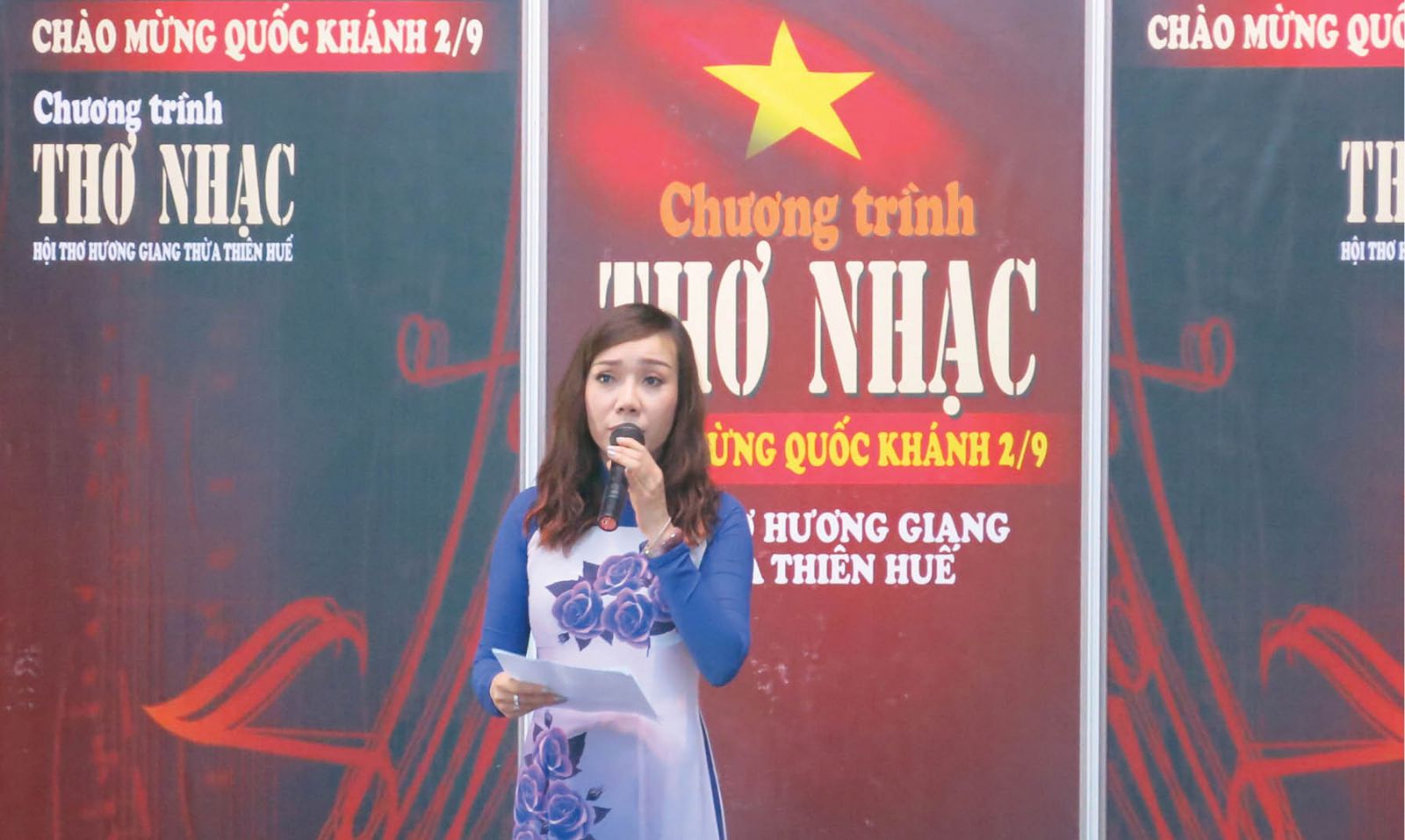
Many cultural and art activities are regularly organized in Hue
Hoang Phu Ngoc Tuong has been so far regarded as the speaker of the Hue culture. Reading his essays, we realize the scent of champaca comes not only at night, but also from the Perfume river, the Bach Ma mountain, and the grassy gardens, including the mossy house of Tuyet Tinh Coc in the Citadel which keeps the memories of the artist generation of Ngo Kha, Dinh Cuong, Trinh Cong Son, Tran Quang Long, etc.
The literary and artistic memories of Hue poets are present on narrow empty streets, as if they are waiting for their writing to wake up and spread their sweet fragrance.
It is said that when writing about Huyen Khong Son Thuong Pagoda on the mountain, Hoang Phu Ngoc Tuong imagined the leaves of the Firmiana simplex trees that dropped their fragrance at the pagoda gate. Many people brought the book to the pagoda looking for the leaves. The pagoda then grew Firmiana simplex trees there to prove that the fragrance in the writer’s essays is real.
The Hue literature has so far tempted readers just like da du birds which woke up other birds to hit the road. But for decades, there has lingered a question. The Hue culture is so profound and the Hue literature is so gorgeous, but why are people still indifferent?
Over 700 years of Thuan Hoa-Phu Xuan-Hue, the literature history of this land got started by a poem. In September 1353, King Tran Du Tong sent Truong Han Sieu to Hoa Chau. One year later, he was so sad that he composed the poem "Hoa Chau Tac.”
From then on, the Hue literature has always stood out with its own academic and pioneering features. In the Tay Son’s era, Hue was the center of literature in Sino-Vietnamese. In the Nguyen’s era, Phu Xuan was the center of literature which gathered many talented people from all over the country. Especially there appeared the royal poetry composed by kings, mandarins, and those in royal families.
Hue was the place that initiated many new writing trends with top-notch works. Nguyen Du lived and worked in Hue for more than ten years. Hue was also the place for “new poets” to gather such as Thanh Tinh, Xuan Dieu, Huy Can, Nguyen Binh, Che Lan Vien, Han Mac Tu, etc. and for surreal poetry to develop (Quach Thoai, Ngo Kha, etc.)
Throughout the history, the Hue literature has enjoyed the contribution of many prominent patriots and revolutionaries in the early 20th century such as Phan Boi Chau, Phan Chu Trinh, Huynh Thuc Khang, etc. Especially such female writers as Tuy Hong, Le Thi Hoang did break the feudal barriers to write. During the doi moi period, Hue was among the first places that encouraged new tendencies of creativity.
Art and literature can be found everywhere in Hue under mossy layers, not to mention Buddhist literature at pagodas. In the digital age, those values sit still, secretly spreading their fragrance.
Except for the Complex of Monuments of the Nguyen Dynasty, which is attracting many tourists, the promotion of other values of art and culture is not noticed adequately.
Le Ba Dang Art Space and Diem Phung Thi Art Space are located on the most beautiful street of Hue, but very few people drop by. The houses of deceased well-known painters such as Ton That Dao, Vinh Phoi, Buu Chi, or the house where Trinh Cong Son used to live and the mossy porch of Ngo Kha, etc., are just the names, but nothing else.
***
In late 2019, many enthusiastic people in Hue gathered and came up with many ideas for the development of tourism in Hue and of how to exploit the cultural heritage of Hue effectively.
Their common dream is that the cultural memories of Hue need to be wakened up. Photographers are thinking about turning the incense-offering ceremony every year at the worship house of Dang Huy Tru, the founding father of photography in Vietnam, into the pilgrimage for photographers.
The young researcher Tran Van Dung suggests a cycling tour along or boating on Huong, An Cuu, Bach Dang, Nhu Y Rivers, stopping by the residences such as Lac Tinh Vien, Tung Thien Vuong, Ngoc Lam Princess, Kien Thai Vuong, Tuy Ly Vuong, Dien Khanh Vuong, Phong Quoc Cong, Dinh Vien Quan Vuong, Tho Xuan Vuong, Hoa Thanh Vuong, Thoai Thai Vuong, etc.
Many people propose honoring other values. In the 1940s of the last century, Tinh Hoa, the first music publishing house in Vietnam, facilitated and brought many Vietnamese songs to music lovers all over Indochina at that time. Lyrics of all-time favorite songs can be engraved on rocks in parks.
Dr. Phan Thanh Hai suggests the restoration of Co nhac Tu where the founding father of Hue Singing is worshiped and Chau Huong Vien (the private residence of the poet Ung Binh Thuc Gia Thi, and also the place where Hue Singing performances and activities of Huong Binh Poetry Association used to be held) to honor Hue singing.
Many people suggest new constructions. The poet Mai Van Hoan puts out the idea of building a memorial space to memorize more than 10 years of Nguyen Du in Hue. Dr. Tran Dinh Hang dreams about a quiet, profound and sacred cultural space on Ngu Binh Mountain so that people can see Hue from above and participate in cultural and artistic activities ...
Since 2009, on the full-moon day of lunar January, Hue writers have had the habit of visiting and offering incense to the graves of deceased poets and intellectuals from Hue in quiet cemeteries in the shade of evergreen trees. Flowers are still in bloom; incense is floating; and the question still lingers. When?
Story: HỒ ĐĂNG THANH NGỌC - Photos: TRANG HIỀN